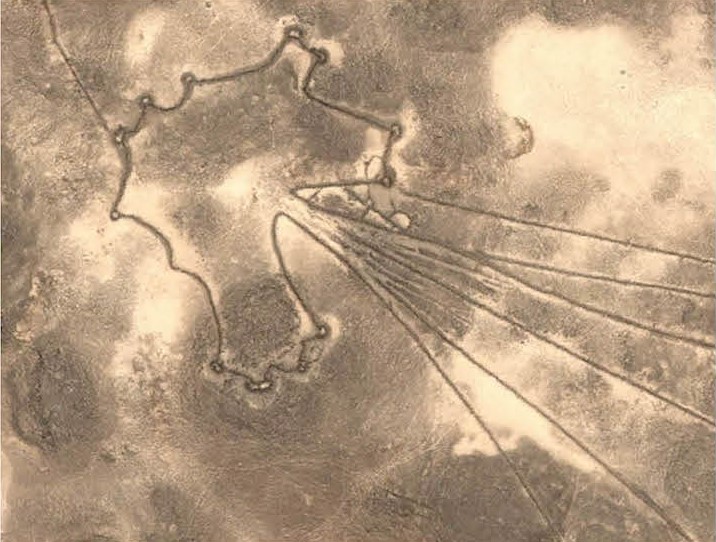
When you think of “kites,” do you think of Mary Poppins, because you spent way too much time on Disney+ during COVID? Did you know “kites” can also refer to large-scale architectural constructions, engineered by hunters 8,000 years ago to funnel animals together for the slaughter? These sort of structures, found from the Middle East to Central Asia, look like the shape of a kite, when seen from above. Which is of course irrelevant, because ancient people never saw any major structure from above, like they had drones, right? Right? Archaeologists have long wondered how people were able to construct these massive (sometimes reaching lengths of several miles), symmetrical, and surprisingly precise architectural achievements without the help of modern measurements. And to make things more intriguing, archaeologists have recently discovered the world’s earliest known blueprints, scratched on limestone boulders, which seem to be plans of local kites–from an aerial viewpoint and to scale! Which means hunters were able to visualize kites from an aerial view, draw plans accordingly, and then organize the creation of massive landscape structures at ground level over several kilometers. Did they do this using people strapped to giant kites and raised up for a birds-eye view? We don’t know that they didn’t do that…
Want to learn more? Join the Archaeological Institute of America Central Indiana Society on Tuesday, September 26, 7:30 PM for a lecture by Dr. Yorke Rowan (University of Chicago), entitled “Desert Kites–The Enigmatic Traps from the Air and on the Ground.” The lecture is free and open to the public, and will be held at Butler University (Jordan Hall 141). We hope you can join us!
- What: Desert Kites–The Enigmatic Traps from the Air and on the Ground by Dr. Yorke Rowan (University of Chicago)
- When: Tuesday, September 26, 7:30 PM
- Where: Jordan Hall 141, Butler University (4600 Sunset Ave, Indianapolis, IN 46208)


